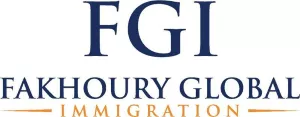As a result of the COVID-19 pandemic, processing issues at USCIS, and the Trump Administration's efforts to protect U.S. workers and wages, there have been several U.S. immigration developments in the last few weeks. This writing will provide an update of some of these recent U.S. immigration developments and the potential impact on U.S. employers and foreign nationals.
- Lawsuits Challenging Increase in USCIS Filing Fees: On August 20, 2020, the American Immigration Lawyers Association (AILA) along with eight (8) other organizations filed a lawsuit challenging the legality of the U.S. Department of Homeland Security's (DHS) Fee Increase Rule. The plaintiffs are seeking an emergency injunction to prevent the Fee Increase Rule from taking effect on October 2, 2020. The suit claims that as Acting Secretary for Homeland Security, Chad Wolf did not have the constitutional or statutory authority to issue the fee changes. There is also a second lawsuit that has been filed by the Northwest Immigrant Rights Project, Ayuda, Inc., and Casa de Maryland, Inc., challenging the DHS's Fee Increase Rule.
- Use of Form I-765 Approval Notices as Evidence of Employment Authorization for I-9 Purposes: On August 20, 2020, the U.S. Citizenship and Immigration Services (USCIS) announced that, due to production delays of Employment Authorization Documents (EADs), employees may use Form I-797, Notice of Action (i.e., Form I-765 Approval Notice) with a date of approval between December 1, 2019, through August 20, 2020, for Form I-9 employment eligibility verification purposes. Employees may present the Form I-765 approval notice for the purposes of satisfying Form I-9, List C #7 as a document that establishes employment authorization issued by DHS.
- USCIS to not Furlough Workers for Now: On August 25, 2020, the USCIS canceled the planned furlough of 13,000 workers, which was set to go into effect on August 30. The anticipated furlough was due to a projected shortfall in the USCIS revenues of $1.2 billion that was initially announced in May. Due to cost-cutting measures, increased revenues, and bipartisan pressure, the USCIS cancelled the furlough for the remainder of the fiscal year (until September 30, 2020). The additional cost savings come through the descoping of federal contracts that assist USCIS adjudicators in processing and preparing case files as well as a myriad of other support activities. Anticipated operational impacts include increased wait times for pending case inquiries with the USCIS Contact Center, longer case processing times, and increased adjudication time for aliens adjusting status or naturalizing. The USCIS is still projecting a budget shortfall heading into FY 2021 and is continuing to seek financial support from Congress.
- New Application for Employment Authorization (Form I-765) Issued by USCIS: On August 25, 2020, a new Form I-765, Application for Employment Authorization, went into effect. The USCIS will not accept Applications for Employment Authorization postmarked on or after August 25, 2020, if not filed with the 8/25/2020 edition of Form I765 and the I-765WS and correct fees.
- Visa Restrictions Imposed on Certain Chinese Citizens: On August 26, 2020, as part of the Trump administration's latest round of sanctions against the People's Republic of China, the DOS announced that it would begin imposing visa restrictions on Chinese citizens "responsible for, or complicit in, either the large-scale reclamation, construction, or militarization of disputed outposts in the South China Sea." These individuals would be barred from the United States and their family members may also face visa restrictions.1
- DHS Proposed Rule to Expand Methods for Collecting Biometrics of Foreign Nationals: On Tuesday, September 1, 2020, the DHS issued a Notice of Proposed Rulemaking that would expand its methods for collecting biometrics. The proposed rule would, according to the notice, "modernize biometrics collection and authorize expanded use of biometrics beyond background checks to include identity verification, secure document production, and records management."2 In addition, the proposed rule will enable DHS to utilize facial, iris, and voice recognition technologies, and to collect DNA from migrant families in custody to verify the genetic relationship of family members.
- USCIS and the U.S. Department of Labor (DOL) submit new regulations to the Office of Management and Budget (OMB) for review that impact H-1B program: The Trump Administration is in the process of trying to implement new regulations that impact the H-1B program. The first regulation is a rule entitled, Strengthening the H-1B nonimmigrant Visa Classification Program. The Administration is attempting to publish this rule as an Interim Final Rule (IFR), which would take effect immediately, and by-pass the usual notice and comment period typical in the rule making process. This rule proposes to revise the definition of the term "specialty occupation," and revise the definitions of the term's "employment" and "employer-employee relationship" with the aim of protecting U.S. workers and wages. In addition, the rule will likely impose additional requirements designed to ensure certain wages are paid to H-1B visa holders. While the specific language of the draft regulation has not been shared, it is widely presumed that it may restrict the ability to sponsor certain individuals for the H-1B category, who may be able to be sponsored under the current regulations. OMB has up to 90 days to complete its review of the regulation, but it is anticipated OMB may complete its review in the near future.
The second regulation is a U.S. Department of Labor (DOL) rule that was submitted to OMB on September 16, 2020. This new regulation is entitled, Restructuring of H-1B, H-1B1, E-3 and PERM Wage Levels. The text of this new rule has not been released, either. However, based on comments made by the Trump Administration earlier in the year, it is expected that the rule will aim to tighten wage criteria, increase wage levels and enhance oversight and enforcement in connection with the above programs. It is anticipated that this rule will be issued as an IFR, as well. Just like with the DHS rule above, OMB has 90 days to review the DOL rule.
- DHS Public Charge Rule Update: On September 11, 2020, the Second Circuit Court of Appeals stayed a District Court's nationwide injunction of the DHS Public Charge Rule. (Note: The Public Charge Rule renders may make certain foreign nationals inadmissible, if they have received certain public benefits, or if there is a determination made by a USCIS examiner, based on a review of the facts of a case, that a foreign national is not able to support themselves in the U.S. and may become a public charge.3) This decision means that the USCIS is now able to apply its new Pubic Charge Rule freely across the U.S. to those foreign nationals that file Green Card applications, or have nonimmigrant visa petitions filed on their behalf. However, at the time of this writing (September 21, 2020), the USCIS has not issued any new guidance. The USCIS website indicates that it will apply the 1999 public charge guidance that was in place before the new Public Charge Rule was implemented on February 24, 2020. It is anticipated that USCIS will likely update its website regarding the Public Charge Rule in the next few days in light of the recent decision issued by the Second Circuit Court of Appeals.
- U.S. Government Terminates Certain COVID-19 Arrival Restrictions: In order to prevent the spread of COVID-19 in the U.S., U.S. Customs and Border Protection (CBP), working with the U.S. Center for Disease Control (CDC), designated 15 U.S. airports that travelers returning to the U.S., who were present in certain countries that experienced a surge in COVID-19 cases, could enter in order to undergo COVID-19 health screening. The countries included the following: The People's Republic of China (PRC) (excluding the Special Administrative Regions of Hong Kong and Macau); The Islamic Republic of Iran; The Schengen Area countries of Western and Central Europe; The United Kingdom, excluding overseas territories outside of Europe; The Republic of Ireland; and Brazil.
The purpose of directing flights from these countries to a limited number of U.S. airports was to focus public health resources to conduct enhanced COVID-19 health screenings in order to protect the U.S. population.
Recently, U.S. Customs and Border Protection (CBP) and the Transportation Security Administration (TSA) announced that, effective September 14, 2020, flights that carry passengers, present in the above listed countries, are no longer required to land only at the 15 designated U.S. airports. Rather, individuals who are present in these countries may now land at any U.S. airport for inspection by CBP and the COVID-19 health screening. CBP contends that by not restricting entry to the 15 U.S. airports, it will allow public health resources to be more effective and will stimulate air travel. CBP indicates that all other health measures to protect the public health will remain in place.
Please note that the announcement by CBP and TSA does not rescind the country-specific COVID-19 health proclamations that were issued suspending the issuance of U.S. visas and/or entry of individuals into the U.S., who are present in the above listed countries, unless the individual is exempt from the proclamations (Examples: Green Card holders; Spouses, Children, Parents of U.S. Citizens or Green Card holders; foreign nationals traveling to the U.S. at the invitation of the U.S. government for purposes related to the containment or mitigation of the COVID-19 virus, etc.), or has obtained a National Interest Exception (NIE) from the U.S. Department of State prior to boarding a flight to the U.S.
- Judge Denies USCIS' Motion to Dismiss in H-1B Market Research Analyst Class Action Lawsuit: On September 15, 2020, a U.S. Magistrate judge denied USCIS's motion to dismiss a class action suit brought by U.S. companies on behalf of H-1B applicants who have had their H-1B petitions denied, because their occupation was defined as a "market research analyst." The judge agreed with the plaintiff's contention that the USCIS has established a "pattern and practice of arbitrarily and unlawfully denying H-1B petitions for market research analysts."4 The judge further said that the claims against USCIS involve common questions of law surrounding the USCIS's practices and whether it misinterpreted the DOL's Occupational Outlook Handbook. The judge also found that USCIS appeared to approve plaintiff's petitions only after being sued.
Footnotes
1 https://www.nytimes.com/2020/08/26/business/economy/trump-sanctions-south-china-sea.html; https://www.law360.com/immigration/articles/1304589/us-issues-new-sanctions-over-south-china-sea-buildup
2 https://www.dhs.gov/news/2020/09/01/dhs-uscis-modernize-define-collection-biometrics
3 A fact sheet on the Public Charge rule can be found at https://www.uscis.gov/archive/public-charge-fact-sheet#:~:text=Definition%20of%20Public%20Charge,month%20counts%20as%20two%20months).
The content of this article is intended to provide a general guide to the subject matter. Specialist advice should be sought about your specific circumstances.

